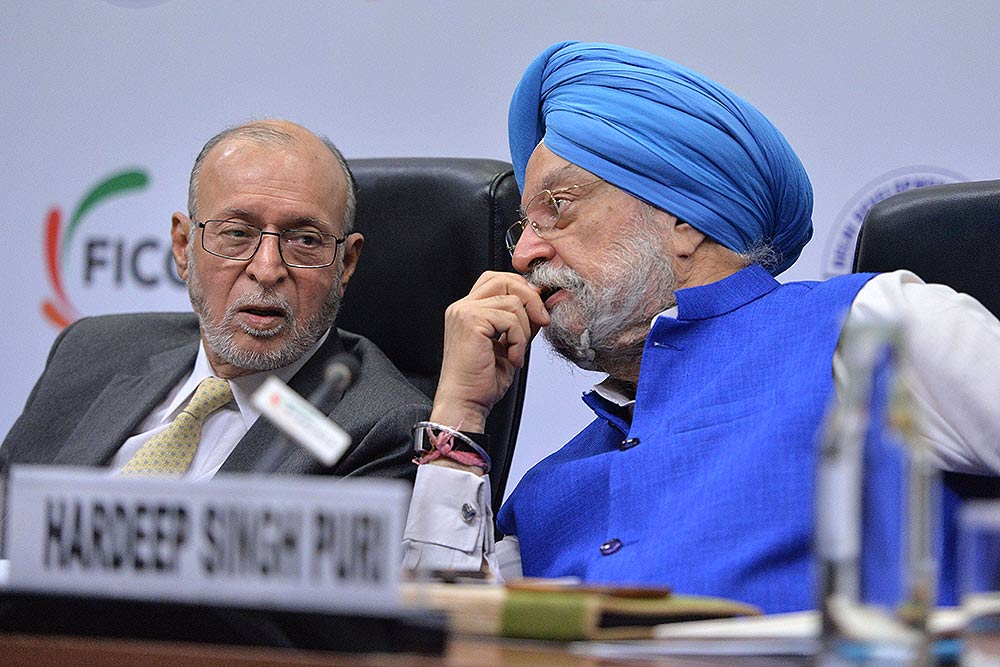India successfully test-fired nuclear-capable ballistic missile Agni-V on Thursday. Several political leaders hailed the "night trials" of the missile and called it "another important step in the direction of Prime Minister Narendra Modi's "clarion call for Atmanirbhar Bharat". Union Minister Hardeep Singh Puri said in a tweet, "The test-firing of Agni-V "validates new technologies and equipment on the missile and further strengthens India’s defence capabilities."
The test firing for Agni-V was done from APJ Abdul Kalam Island off the Odisha coast. The trials were held amid India's border row with China. Recently, skirmishes between India and Chinese troops were reported near in the Tawang sector of Arunachal Pradesh.
Successful night trial of the Agni-5 ballistic missile. Validates new technologies & equipment on the missile & further strengthens India’s defence capabilities. Congratulations to the scientists & technicians on this remarkable achievement.@DefenceMinIndia pic.twitter.com/n3VFe6zLsP
India had carried out a similar test of the missile in October last year as well. One test of Agni 5 was also carried out in 2018.
What are the key features of Agni-V ballistic missile?
The long-range surface-to-surface missile, Agni-V, can strike targets at ranges up to 5,000 km, bringing almost the entire Asia, including the northernmost part of China, as well as some regions in Europe, under its striking range.
The missile uses a three-stage solid-fuelled engine, is capable of striking targets with a very high degree of accuracy, the Defence Ministry was quoted by ANI as saying.
It has a very high degree of accuracy to hit targets and a height of 17 metres.
Agni-V is capable of carrying a 1.5-tonne warhead and has a launch weight of 50,000 kg, making it one of the country’s most powerful missiles, News 18 reported.
Sources told the news agency that the missile has been made lighter by adding lighter composite material which will enable the missile to go longer ranges
The Agni 1 to 4 missiles have ranges from 700 km to 3,500 km and they have already been deployed, PTI reported.
What it means for India?
The successful trial of Agni-V missile comes as a significant boost to India's strategic deterrence and military capabilities. The fact that the missile can reach China, makes it important for India's defence sector — keeping in view the simmering India-China border tensions. Both the countries have been at loggerhead over the western, central and eastern border issues.
In 2020, a major clash between India and Chinese troops were reported in the Galwan Valley in Ladakh, in which 20 India soldiers had dies. This year, on December 9, another clash between the two sided were reported in Arunachal Pradesh's Tawang region.
Despite several meetings and negotiations, no breakthrough has been in the India-China border talks. Major General SB Asthana believes that negotiations are hard as both parties have "hard stance" over the issue.
Now, the Agni-V project is aimed at boosting India's nuclear deterrence against China which is known to have missiles like Dongfeng-41 having ranges between 12,000-15,000 km.
In June this year, China had claimed a successful test of a land-based ballistic missile interception system, according to the Guardian. China’s state media was then quoted as saying that was Beijing’s sixth known test of a land-based anti-ballistic missile.
Moreover, after reports had emerged about India's plan to conduct a test of the Agni V, Chinese foreign ministry spokesperson Zhao Lijian was quoted as saying: “Maintaining peace, security and stability in South Asia meets the common interests of all, where China hopes that all parities would make constructive efforts".
The defence ministery said the successful test of Agni-5 is in line with India's stated policy to have 'credible minimum deterrence' that underpins the commitment to 'No First Use'.
The successful test firing of the missile also paves way for its induction into the Strategic Forces Command that takes care of India's strategic assets, PTI quoted people familiar with the matter.
About other Agni missiles
India has been steadily enhancing its overall military might in the last couple of years. Here's look at other Agni missiles:
Agni-I Missile: Surface-to-surface Agni-I missile can carry one tonne warhead and has a range of 700.
Agni-II Missile: The range for Agni-II is more than 2000 km. The salient features of the test firings are mobile launch capability, multi-staging,
state-of-the-art control and guidance, re-entry technology and sophisticated
on-board packages including advanced communication.
Agni-III Missile: Agni-III is a long-range missile with a capability to
launch from rail mobile launcher. It has a capacity to carry 1500 Kg warhead.
Agni-4 Missile: The successful test firing of the Intermediate Range Ballistic Missile, Agni-4, was carried out at approximately 1930 hours on June 06, 2022/ Following the test, the defence ministry had said that it reaffirmed India's policy of having a 'credible minimum deterrence capability."

देश में एक करोड़ यात्री प्रतिदिन कर रहे हैं मेट्रो की सवारी: पुरी ..

Union Minister for Petroleum and Natural Gas and Housing and Urban Affairs, Hardeep Singh Puri addressing a press conference in ..

Joint Press Conference by Shri Hardeep Singh Puri & Dr Sudhanshu Trivedi at BJP HQ| LIVE | ISM MEDIA ..
(3).jpg)
"I wish a speedy recovery to former Prime Minister Dr Manmohan Singh Ji. God grant him good health," Puri wrote. ..